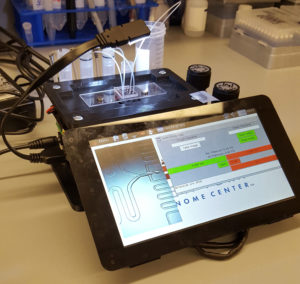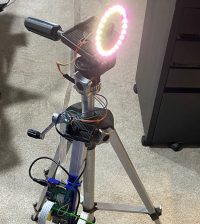- How to Adjust X and Y Axis Scale in Arduino Serial Plotter (No Extra Software Needed)Posted 7 months ago
- Elettronici Entusiasti: Inspiring Makers at Maker Faire Rome 2024Posted 7 months ago
- makeITcircular 2024 content launched – Part of Maker Faire Rome 2024Posted 9 months ago
- Application For Maker Faire Rome 2024: Deadline June 20thPosted 11 months ago
- Building a 3D Digital Clock with ArduinoPosted 1 year ago
- Creating a controller for Minecraft with realistic body movements using ArduinoPosted 1 year ago
- Snowflake with ArduinoPosted 1 year ago
- Holographic Christmas TreePosted 1 year ago
- Segstick: Build Your Own Self-Balancing Vehicle in Just 2 Days with ArduinoPosted 1 year ago
- ZSWatch: An Open-Source Smartwatch Project Based on the Zephyr Operating SystemPosted 1 year ago
3D Printed Microfluidic Kit for Low-Cost Cell Analysis

Researchers from New York Genome Center and New York University have recently developed an open source 3d Printed microfluidic controller.
The device fits on a bedside and can be obtained and assembled for around $600, so it’s really cheaper than other comparable instruments.
“Most commercial microfluidic instruments are very costly; as a result, not every lab has access to exciting technology for single-cell analysis,” said Dr. William Stephenson, who led the study and the development of the instrument. “We designed the instrument to perform droplet microfluidics and in particular Drop-seq, a massively parallel technology for single cell RNA-sequencing.”
The multi-tiered 3d printed frame of the instrument includes a mount for the raspberry pi chip and a tablet computer. For the fluid handling, commercially available micro air-pumps, regulators, and micro solenoid valves were used.
A shaft was 3D printed and added to a permanent magnet stepper motor to stir barcoded microparticles used in the cell analysis, which could then be visualized on the screen.
The device is fully open source and it’s able to work in different experiments using droplet microfluidics. Furthermore, thanks to its portability, the controller permits patient samples to be processed on-site and immediately after surgery, minimizing handling and transport to optimize sample quality.
For further information you can refer to the official New York Genome Center website.















